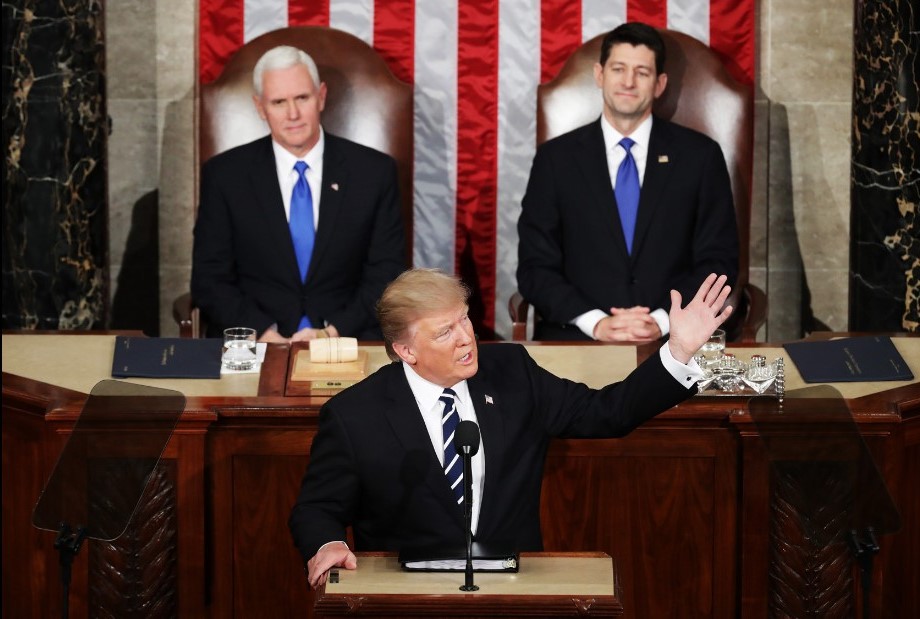AFP photo
By
Tom Arms
Donald Trump’s economic policy can best be described as guns, butter and bridges.
At the moment the United States ratio between its public debt and what it earns as a country every year is 104.7 percent. That means the government owes 4.7 percent more than the country earns.
If America was a business– or a private household—the bank manager would be strongly advising Uncle Sam to earn more money and/or cut expenses or file for bankruptcy.
Now, Donald Trump wants to increase defence spending by ten percent, maintain welfare spending, spend trillions on improving American infrastructure and cut taxes.
Cash to pay for this will come from increased revenues from a stimulated economy, revised trade and defence deals with other countries, cuts in environmental programmes, the diplomatic corps and foreign aid.
Can he do it? Well let’s take a quick look.
Improve Infrastructure— America has plenty of roads, bridges, railways, ports and airports. It just needs to maintain what it has—but that will cost plenty. The American Society of Civil Engineers reckons that $3.6 trillion needs to be spent by 2020 just to maintain existing infrastructure.
Maintain Welfare Spending – 70 percent of the federal budget goes on welfare. A big chunk of Trump’s support is at the bottom end of the ladder. He cannot afford to cut welfare spending, especially if Obamacare is for the scrap heap.
Cut taxes–It sounds simple. Cut taxes, business expands and employs people who pay more taxes which means more spending money for Trump. But even if the plan works, it takes time. So more money has to be borrowed until the extra revenues materialise, if they do.
Revise trade deals and increase tariffs—Trade Agreements require the agreement of at least two parties. If one side—we will say America—decides to unilaterally raise tariffs then rest assured that the other will retaliate. The clear result will be higher consumer prices.
More money from Allies—He who pays the piper calls the tune. American generosity—which is not as generous as Trump claims—allows it to call the major shots on policies of its Asian and European allies. There are already growing movements in both regions to develop defence policies that allow Japan and Europe to have foreign policies more independent of Washington. Demanding more money will increase that shift.
Increase the Nuclear Arsenal – SALT I, SALT II, ABM, NNPT, INF, CTBT, and START; all acronyms for nuclear agreements which took decades to negotiate. All designed to drag the world back from the abyss of the most frightening acronym of all—MAD or Mutual Assured Destruction.
Wipe out ISIS – How? It sounds so simple? But how do you destroy a religiously-inspired hydra-headed monster that pops up in another unstable part of the world every time you have crushed it somewhere else? The sword is not enough, which brings us to…
Cut diplomacy and aid budget—Surely Afghanistan, Iraq, Somalia and Libya have taught analysts that militarily overthrowing regimes and walking away results in political vacuums which are filled by even worse alternatives. Diplomacy, trade, foreign aid and the military must work hand in hand to either prevent war or repair war damage so that fresh conflicts do not occur. Overemphasis on the military creates a destabilizing and extremely expensive downward spiral.
In the 1960s President Lyndon Johnson launched his Great Society. At the same time he threw America into an open-ended and ultimately disastrous war in Vietnam. “Guns and butter,” he called it, and he assured the American people—we can afford it. We are rich. Successive American presidents have had to grapple with his economic legacy ever since.
Tom Arms is the editor of LookAheadnews.com. Sign up now for the weekly diary of world news events.
LookAhead Radio World Report for week commencing 6 March 2017:



No Comments Yet!
You can be first to comment this post!